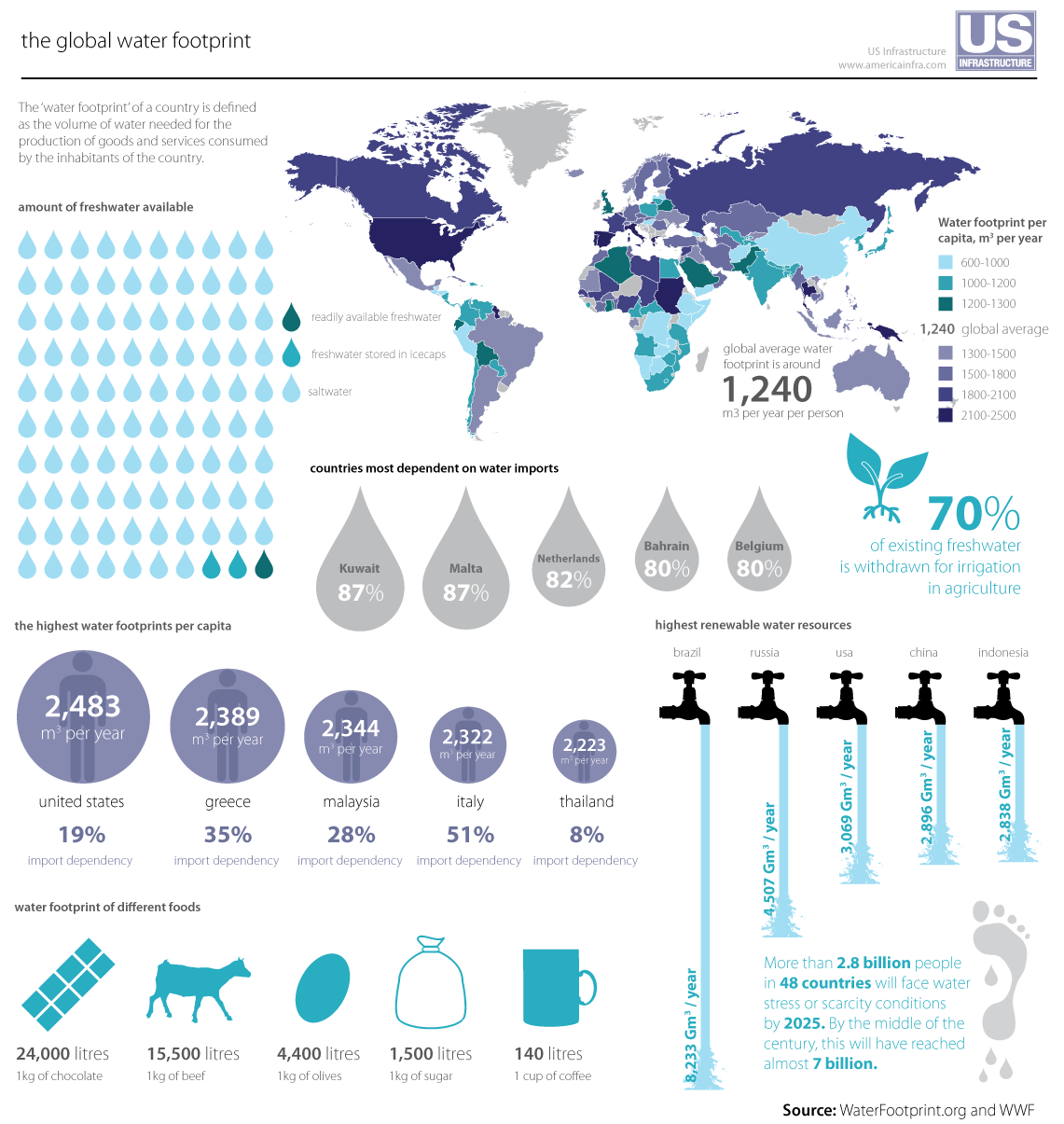Freshwater is a scarce resource
Aspects of the environment fundamentally moderate globalization in principle and international business in practice. Climate change, biodiversity collapse, deforestation, eco-challenges of all sorts are going to shape what we do and what we cannot do.
The graphic below look at the issue of your water footprint. The water footprint of a product is an empirical indicator of how much water is consumed, when and where, measured over the whole supply chain of the product.
The water footprint shows human appropriation of the world’s limited freshwater resources. It helps assess the impacts of goods and services on freshwater systems and then, formulating strategies to reduce those impacts.
Freshwater is a scarce resource; its annual availability is limited and demand is growing. The water footprint of humanity has exceeded sustainable levels at several places and is unequally distributed among people. Improving information about water footprints of communities and businesses will help to understand how we can achieve a more sustainable and equitable use of fresh water.
There are many spots in the world where serious water depletion or pollution takes place: rivers running dry, dropping lake and groundwater levels and endangered species because of contaminated water. The water footprint helps to show the link that exists between our daily consumption of goods and the problems of water depletion and pollution that exist elsewhere, in the regions where our goods are produced.
Nearly every product has a smaller or larger water footprint, which is of interest for both consumers that buy those products and businesses that produce, process, trade or sell those products in some stage of their supply chain.
Specifically, approximately [fact1] billion people in nearly [fact2] countries will face water stress or scarcity conditions by 2025.
By the middle of the century, this will have reached almost [fact3] billion people.
A) 3
B) 4
C) 2

Trending now
This is a popular solution!
Step by step
Solved in 2 steps









